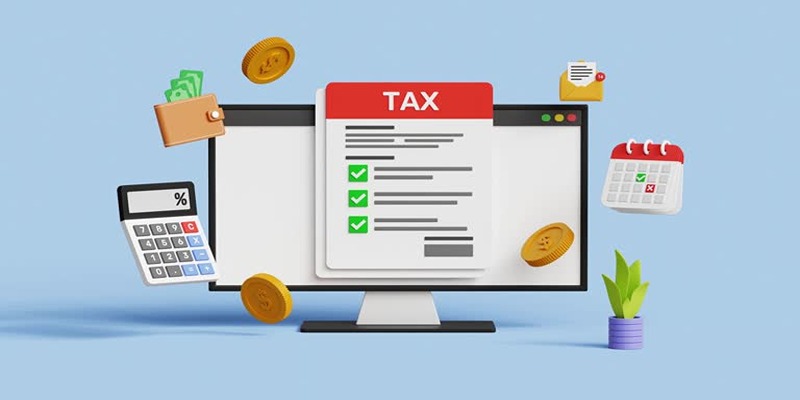Tax season is here, and filing taxes can feel daunting. Luckily, e-filing makes the process faster, easier, and more accurate. But how does it work, and how much time does it take? This guide breaks down the online tax filing process step by step, offering practical tips to simplify your experience and ensure a stress-free approach to submitting your taxes efficiently.
Why File Taxes Online

E-filing, or electronically filing your tax return, has become the preferred method for millions of taxpayers around the world. Here’s why it might be the right choice for you:
Speed and Efficiency
Filing taxes online eliminates the need for paperwork, trips to the post office, or waiting in long lines. With online filing tools, taxpayers can submit their returns in a matter of hours, or even minutes, depending on complexity.
Accuracy
Tax software is designed with built-in tools to calculate your taxes and identify errors before submission, significantly reducing the possibility of mistakes. Many platforms can also flag deductions or credits you may qualify for, ensuring you maximize your refund.
Refunds Are Faster
When you file online and opt for direct deposit, refunds are processed much faster than with paper tax returns. Most taxpayers can receive their refunds within 21 days.
Security
E-filing is highly secure, contrary to common belief. Tax platforms use advanced encryption to safeguard your sensitive information, ensuring it remains protected throughout the entire filing process. Stay confident and file securely.
Eco-Friendly
Filing taxes online not only simplifies the process but also promotes environmental sustainability by reducing paper usage, eliminating the need for physical documents, and supporting a greener, more eco-friendly approach.
How to File Taxes Online
Filing your taxes online requires a few essential steps. Don’t worry, you don’t need to be a financial expert to get it done!
Step 1. Gather All Necessary Documents
Before you even log into a tax platform, make sure you have all the paperwork and information you’ll need. This typically includes:
- W-2 Forms from your employer(s)
- 1099 Forms for additional income like freelance work, investments, or side gigs
- Last Year’s Tax Return for reference
- Social Security Numbers for you, your spouse, and any dependents
- Receipts for Deductions such as medical expenses, business expenses, or educational costs
Having all these items at your fingertips will make the filing process faster and more accurate.
Step 2. Choose a Tax Software or Platform
Numerous online tax filing platforms are available, each designed to work for different kinds of taxpayers. Popular choices include TurboTax, H&R Block, and IRS Free File (for those eligible). Consider the complexity of your tax situation when selecting your software:
- Free Options: If you have a simple tax return (e.g., standard deductions and one source of income), IRS Free File and many free tax tools will suffice.
- Paid Platforms: If your tax situation involves investments, businesses, or itemized deductions, you may benefit from using a paid platform with advanced features and professional guidance.
Step 3. Create an Account
Most tax software requires users to create a secure account. This keeps your information safe and allows you to save your progress if you decide to take breaks while filing.
Step 4. Enter Your Financial Information
Follow the prompts to input all your financial data. Tax platforms are designed to guide you step by step, using an intuitive question-and-answer process. This often feels like a user-friendly conversation that ensures nothing is overlooked.
Step 5. Review Your Tax Return
Nearly every platform has a “Review” or “Summary” feature, which checks for potential errors, flags missing information, and provides clarity about your deductions or credits. Take the time to double-check everything before submission.
Step 6. Submit Your Tax Return
Once you’re confident everything is accurate, you can submit your tax return electronically. Be sure to save a PDF copy of your return for your records!
How Long Does Online Tax Filing Take?
One of the biggest selling points for filing taxes online is the time efficiency. Here’s a breakdown of how long it typically takes to complete the process, depending on your specific circumstances:
Simple Tax Returns
If your tax situation is straightforward (e.g., a single source of income, no dependents, and no itemized deductions), online filing can take as little as 30 minutes to an hour.
Moderate Tax Returns
For those with moderate complexity (e.g., multiple income sources, student loans, charitable deductions), expect to spend around 1 to 2 hours completing your return.
Complex Tax Returns
If your taxes involve itemized deductions, investments, real estate, or business income, the process could take between 2 to 4 hours, depending on the complexity and how well-prepared you are with documentation.
First-Time Filers
If this is your first time filing taxes online, budget an extra hour or two to familiarize yourself with the process and platform you’re using.
What About the IRS Processing Time?
After submitting, the IRS typically processes electronic returns in 24 to 48 hours, and refunds for e-filed returns can arrive via direct deposit in about 21 days.
Tips for Hassle-Free Online Filing

To save time and ensure everything goes smoothly, here are a few pro tips for filing taxes online:
- E-File Early: Filing early minimizes the stress of tax season and prevents delays in case of errors or audits.
- Opt for Direct Deposit: This is the fastest way to receive your refund. Just make sure your bank account information is accurate.
- Save Your Login Information: If you file with the same platform next year, having your login and previous details on hand will simplify the process.
- Seek Help When Needed: Many platforms offer live chat, tutorials, and even professional tax assistance if you get stuck.
Final Thoughts
Filing taxes online doesn’t have to be stressful. With proper preparation, the right tools, and a bit of patience, you can file accurately and even maximize your refund. Whether handling a simple return or dealing with self-employment taxes, online filing provides everything you need to succeed. Start today by gathering your documents and choosing reliable tax software. Take control of your taxes and make the process hassle-free—you’ve got this!












